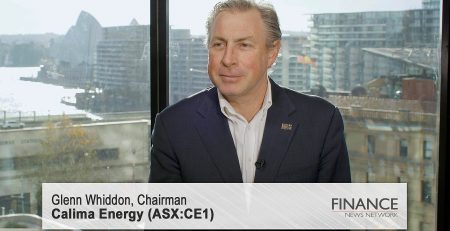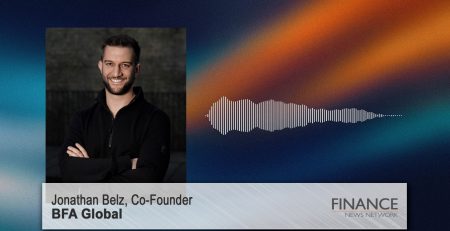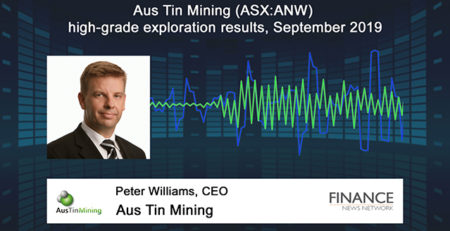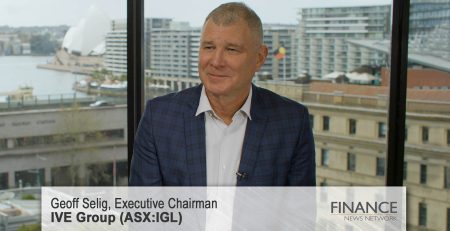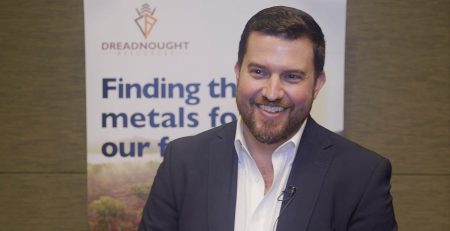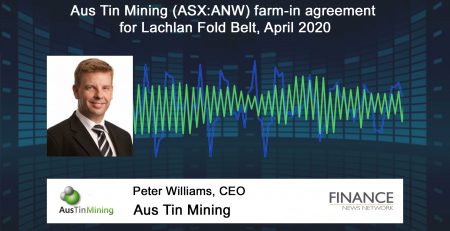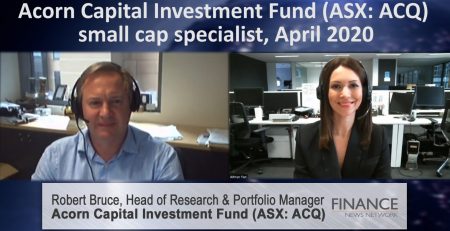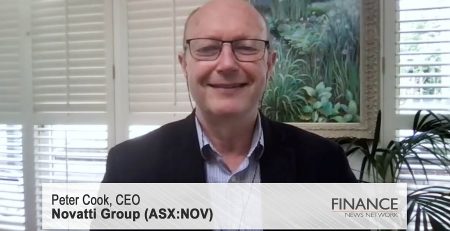Market update with Shaw and Partners, September 2024
Martin Crabb, Chief Investment Officer at Shaw and Partners, speaks on the mixed market outlook. He discusses growth, financial conditions, central bank policies and valuations. He advocates for a cautious approach focused on stock picking in the current climate, favouring small caps over large caps.
Martin Crabb: Thanks very much, Peter, and welcome, everyone, to this edition of the Hidden Gems webinar. As Peter said, I'm the Chief Investment Officer at Shaw and Partners, and we are a firm with about 220 advisors, about $35bn-odd of client assets and all the major cities around Australia. So, hopefully, you've heard of us before. I'm going to spend the next sort of five to 10 minutes, probably closer to 10 than five, just to talk about the market outlook and how we're seeing things. And, interestingly, I was just looking at some numbers this morning. If you roll forward to the end of September, which is in only a few days, it looks like the Australian share market's returned over 20 per cent, which would be a surprise to a lot of viewers, no doubt, because it's been a very topsy-turvy kind of market, but doesn't feel like a 20 per cent market, but it has been. And just probably cycling a pretty weak period this time last year.
So, one of my key responsibilities is setting the asset allocation for our advisors and our clients, is really trying to work out… reading the tea leaves or looking at the crystal ball on what the future looks like. And if I go back 12 months, very few people were talking about a 20 per cent return from Australian shares, and probably even more from US shares, driven by technology. So, yeah, it's very important for investors not to get caught up in momentum or sentiment too much, and we really encourage investors to have a framework. And whether that framework applies to their portfolio construction or their asset allocation or even the way they look at businesses and companies, I think having a framework's really, really important. And a lot of amateur and novice investors just don't have that framework, and they let their emotions and animal spirits control the investment outcome, which is not necessarily always the right way to go.
So, just let me take a few minutes to walk through the framework that we use to look at asset allocation, which is really code for how positive or conservative we are with investment portfolios. And we look at four factors. We look at lots of factors, but four primarily, which are growth, financial conditions, what we call central bank positioning, so what's the direction of interest rates, and then finally valuation. And, look, there's a lot more that goes into investing than those four things, but if you get them right, you're a long way to being successful.
So, if we look at… Again, it's worth comparing 12 months ago to today. So, in terms of growth, 12 months ago, things were clearly improving. Most economies were still recovering from COVID, we were coming out of lockdown, and growth was clearly, clearly positive. If I look at it today, the picture's a lot more mixed. We are definitely seeing slowing manufacturing activity, there are a number of measures, such as the PMI data, which measure manufacturing activity, which are looking at slowing down. We're seeing the labour market, both in the US and in Australia, is clearly starting to soften. Job ads are falling, vacancies are falling, and the labour market's really loosening up. Unemployment's starting to tick up. But most forward-leading indicators of growth are turning down. So, they've been picking up for quite some time, but they're turning down. So, a bit of a mixed measure. Obviously, some countries, like China, are stimulating their economy, but generally speaking, we're starting to see growth slow, and that should manifest itself in lower earnings estimates going forward, but we're just in the early days of that. So, growth has probably gone from being a green traffic light to an amber, and maybe even turning red in some markets. So, that's a really important part of asset allocation, is the direction of growth. Not so much the level, but the direction.
Secondly, financial conditions. So, again, if we go back 12 months ago, we were starting to see longer-term interest rates start to fall. Even though, you know, official interest rates or cash rates were still flat to rising, we started to see a fall in things like bond yields and corporate credit spreads, and even in things like fixed-rate mortgages. And that's been the story for the past 12 months. We've seen the Fed pivot, where 12 months ago Jerome Powell said the next move in rates was probably going to be down. It's taken him 12 months to do it, but he's followed through with a rate cut. So, we're starting to see financial conditions, which have been very loose, just seeing signs of them tightening up a little bit. We're starting to see very early signs of some consumer distress in things like credit card defaults and auto loan defaults, particularly in America. Not seeing much stress in the Aussie market, loan defaults are very low here. But certainly globally we're just starting to see things tighten up just a little bit. So, again, probably going from a green traffic light to an amber one, just as interest rate's being cut, but longer-term interest rates, borrowing spreads, these sorts of things, probably just starting to flatten out.
If we look at central banks next, clearly, clearly green, green traffic light there. Every major central bank, with the exception of Australia and the Bank of Japan, have been cutting rates. And we've seen China quite recently in the past 48 hours make a number of cuts to interest rates and mortgages. Obviously, the US Federal Reserve cutting the Fed fund's rate. We've seen the Swiss Central Bank, the European Central Bank, the Bank of England, all of these central banks are cutting rates, and Australia will definitely cut rates in the new year, timing uncertain. But so central banks have gone from being focused on inflation to now focused on unemployment. So, that's very positive. So, that's definitely a strong green light. So, we've got probably two amber and one green so far.
And then the last factor we're looking at is valuation. So, looking at equities versus bonds, that's the key valuation measure that you need to look at, and you are in bonds if you're defensive, you're in equities if you're more growth-oriented. And valuations are definitely stretched at the moment. We've got long-term bond rates between 3.5 and 4 per cent in most countries, and yet equity markets are trading on 20-plus times earnings. So, the US market 12-month forward earnings estimate divided into today's price is giving you around 22 times, which is, if you invert that, you get the equity yield that's less than 5 per cent. So, the spread between the equity yield of five and the bond yield of four, 1 per cent, is very, very low. That's a very low equity risk premium.
So, it's suggesting that equities are overvalued relative to bonds. Now, that's fine if growth's picking up. If growth's accelerating, you get paid earnings growth in equities, you don't get paid earnings growth in bonds. So, if you're confident you're going to get strong earnings growth, then a low equity risk premium is fine. But, as I said earlier, does seem to be that the growth is rolling over.
Now, the caveat to that is the US is expected to grow its earnings by almost 30 per cent over the next two years. From a standing start today looking forward two years, estimates are expected to grow at 30 per cent. So, if you're getting that sort of growth, you're happy to pay a bit more for your shares. The problem is, in Australia, that earnings growth number's more like five or six, so one per cent this year, and maybe recovering to four or five next year to give you a five or six. So, the PE in Australia is more like 18 than 21, 22, but, still, that does look expensive.
So, we need to be conscious that when equities are expensive, you tend not to do well over the long term. That doesn't mean you can't do well in the short term, because that's proven more by earnings.
So net net, we're not out of the markets, we're not saying everything's terrible. Obviously, interest rates coming down is really good, economies are a lot more resilient, but we're just saying to investors, "Exercise a little bit of caution, have a little bit of dry powder, and do your homework." And I think the companies that you're hearing about today, they're less of a macro story, they're more a stock-specific story. So, it's really about understanding the companies, and I'm sure there are some really good ideas out there.
We do think it's a stock picker's market. We think the easy money's been made out of the market as a whole, and we do encourage people to look more at small caps than large caps. We think the large cap market looks pretty fully valued. Stocks like Commonwealth Bank (ASX:CBA) on 25 times earnings, for example, you're much better off being in small caps. So, in our portfolios, we're underweight large cap companies and we're overweight small caps, with a real focus on active management.
So, I think I've probably taken up my allocated time. I'll hand back to you, Peter.
Ends
Copyright 2024 – Finance News Network
Source: Finance News Network



